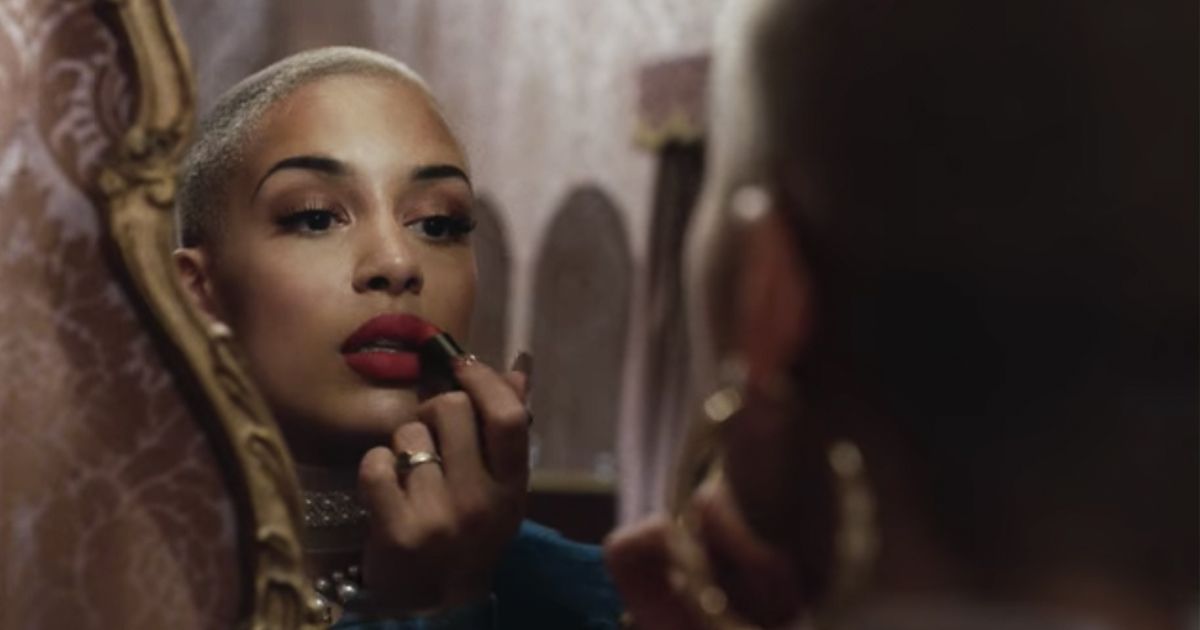How the lyrics of Jorja Smith reflects Carter's ideas of female identity - by Camille Saunders

In both “Beautiful Little Fools” by Jorja Smith and “The Bloody Chamber and Other Stories” by Angela Carter, female identity is seen as being quenched by male superiority, for example by the oppression of Laura Mulvey’s male gaze. The notion that women can only exist in the shadow of a man is a typical Gothic trope explored by Carter, often with a subversive undertone revealing her 2nd wave feminist views. Carter said herself upon the book’s release in 1979 that “The Bloody Chamber is a feminist retelling because I am a feminist in everything else and one cannot compartmentalise these things.” This highlights that is a purposefully feminist, Gothic retelling of the fairy-tales which children are fed as a first dose of the worldwide patriarchal doctrine required to keep women in their place. The fact itself that Carter and Smith present these transgressive ideas in the literary and musical industries respectively (which were previously monopolised by men) further highlights their main message about women: regardless of how long a stereotype has been upheld, if it is as fundamentally wrong as misogyny, it must be subverted. This is shown through the preordained inferiority complex expected of women, the prescriptive ideals of femininity, and, arguably most importantly, the need for emancipation, not just from the stereotypes but from the oppressive mindset.
The first stark parallel we can draw between the two media is the preordained inferiority of women, as stated by the prevailing patriarchy in both women’s time periods; indeed, it reflects the tragic persistence of the patriarchy across all societies at any given time. It is worth noting that matriarchies are often mythical, for example the Amazons in classical literature, whereas the patriarchy is prevalent not only in the female Gothic, but in reality, the world over. The refrain “beautiful little fools” is used as a motif to symbolise the constant repetition of society telling women what and who they ought to be. This tripartite motto of femininity is derogatory in more ways than one: the aesthetic adjective “beautiful” suggests the measure of a woman is her appearance, which not only derogates women and commodifies them to objects meant to be observed rather than seen as intellectual equals, but also links the male gaze as proposed by Laura Mulvey. This refers to the suffering that can be caused by simply a look; it does not refer to a specific man looking at a specific woman and feeling sexually attracted to her, but rather Man as a faction looking at Women as a separate faction and seeing them all as sexual objects; the suffering refers to the irreversible damage this outlook causes on society, causing artists such as Smith to feel the need to write such a song as “Beautiful Little Fools”. The infantilising adjective “little” not only demeans women as a whole, implying they are inferior to men on a social level, but also reduces women as individuals to being weaker and more submissive than men, and, crucially, of less importance. Even from a purely linguistic approach, the fact that there are two adjectives for one noun could be taken to suggest that even through the media of language itself, women are represented more by their embellishments than by their substance itself. Finally, the reductive noun “fool” implies naivety and obliviousness to one’s surroundings; as the song implies later with “we’re all just beautiful little girls playing a game of being fooled”, this suggests women are never naïve or oblivious to their situation, but either cynically shrewd enough to accept that whether or not they fight the patriarchy it will always subdue them, or seem naïve out of choice, as, in the case of many of the heroines in “The Bloody Chamber and Other Stories”, it is sometimes easier to feign ignorance than to truly comprehend the tragic situation of females in society, or indeed of femininity itself as an abstract concept. For example, in “The Bloody Chamber”, the mother figure is undeniably the real heroine, regardless of Propp’s somewhat outdated theory that the heroine must be beautiful, submissive, and charming: in other words, a “beautiful little fool”. Carter subverts this completely by making the anonymous protagonist’s mother “eagle-featured” rather than “beautiful” (inducing the image of a bird of prey; the predator rather than the innocent victim); “indomitable” rather than “little”; and rather than being a “fool”, we are constantly reminded of how she defeated “a junkful of pirates” or “a man-eating tiger”, thus proving that even a creature that men could not defeat, she as a woman could. The phrase “she took my father’s gun, and shot a single, irreproachable bullet through my husband’s head”. This tricolon also reflects many ideologies relating to the role of femininity in society. For example, the fact that it is her father’s gun could suggest that for her to be recognised in society, she must be married to a man in order to gain his social assets. Furthermore, it could suggest that femininity as a concept is not valued in society, as in order to save her daughter from her death, she must embrace her inner masculine qualities, namely her decisiveness and her violence. Alternatively, this could suggest that she is taking her husband’s authority and simply using it to enhance her autonomy, highlighting the fact that she does not need a man to be able to define a future for herself. This shows that while there are distinct parallels between the morose acceptance suggested in “Beautiful Little Fools” and “The Bloody Chamber”, Carter’s writing is inherently more transgressive as she actively opposes Propp’s theory as opposed to playing into it.
Both Smith and Carter explore the idea of prescribed beauty ideals, be this physical beauty or a general fulfilment of society’s expectations. The metaphor in “Beautiful Little Fools” that “they might not like art, but their face is a canvas” highlights the fact that they change their outward nature in order to fit into what society wants them to conform to, rather than embracing their autonomy and identity as an individual. This also reflects the concept of the Lacanian theory of aesthetic recognition, as it suggests that in order for a woman to see her inner perfection, she must first see a blemish-free exterior, much like the masks used in “The Bloody Chamber and Other Stories”. The Marquis’ skin is described as being “waxy, like a mask”; while this reflects toxic masculinity rather than abrasive misogyny, it still eludes to a society so dependent on deceit and facades that neither sex is truly liberated from the battle between the internal and the external, as proposed by Jacques Lacan’s aesthetic recognition theory. This propensity to rely on external beauty for internal love is manifested, somewhat characteristically, in “The Snow Child” by the way the heroine is described. The colour imagery in “I wish I had a girl as white as snow”, “as red as blood” and “as black as that raven’s feather” is only one reason why this tricolon of adjectival phrases summarises not only Freud’s Madonna/whore complex, but also the tripartite expectation of women to be either virgins, sex objects, or dead; either way, their image is still wholly relying on their sexuality in the eyes of men. “Red” represents not only lust but also reflects the loss of virginity, “white” represents not only purity and chastity but also the “closed system” of her virginity, as if it were almost a burden she longs to rid herself of, as referred to in “The Werewolf”, while “black” not only connotes physical death, but arguably the death of male desire for an overused woman, or even the moral death of any patriarchal society.
Overall, Carter and Smith are both supported by notable critics in their argument that society views women as commodities for visual rather than emotional gratification, as well as subjecting them to an eternal entrapment of the patriarchy’s expectations of what the ideal woman should be, rather than who she could be.



